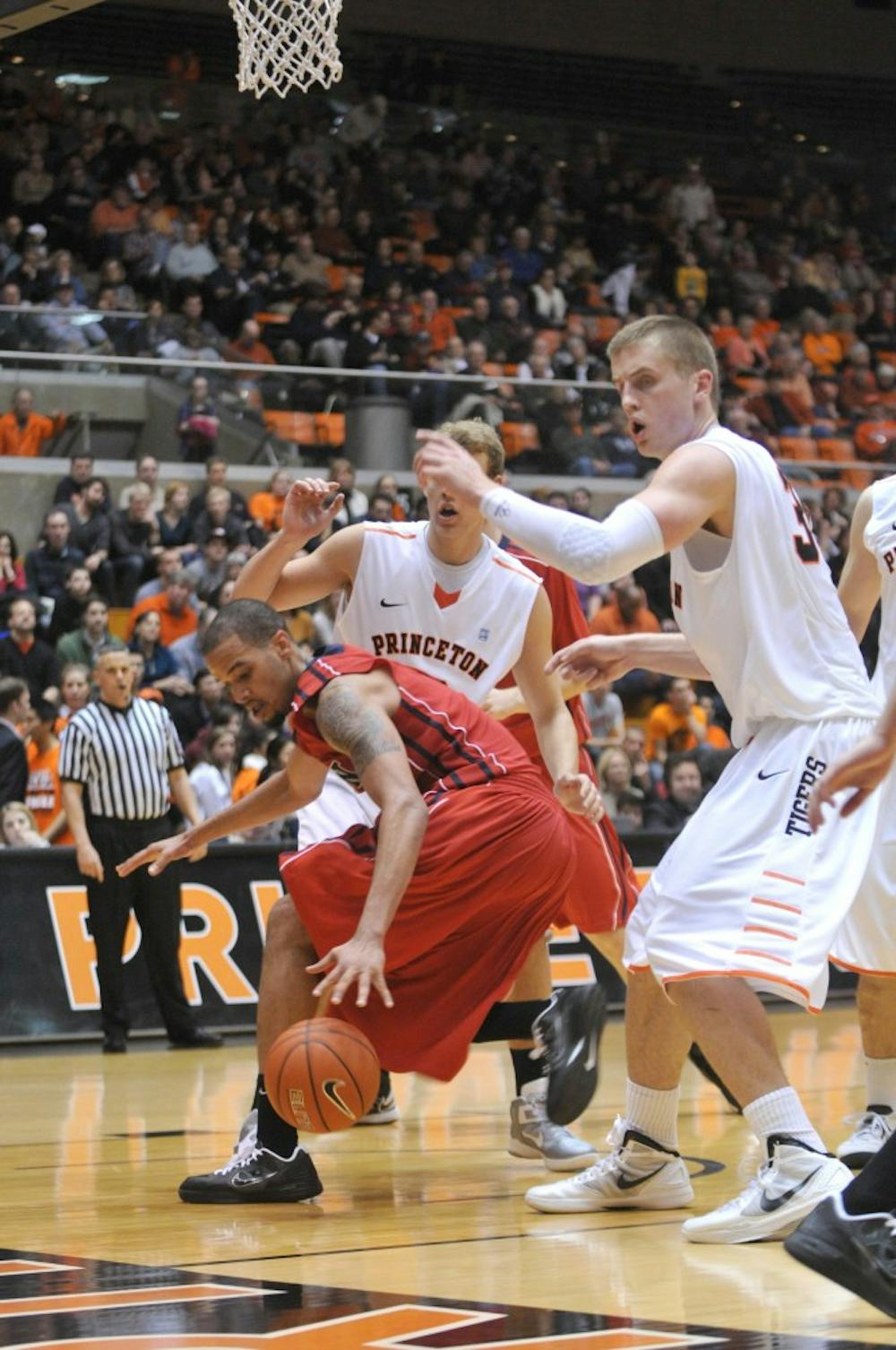
When Penn’s five starters stepped on the floor against Princeton Saturday night, it was impossible not to notice how small the Quakers looked compared to their Ivy foes.
Of the five Penn starters, only two were above 6-foot-5, the height of the Tigers’ shortest starter.
Size matchups have been a problem for the Red and Blue all season, especially as junior forward and captain Fran Dougherty has been sidelined with mononucleosis for the past five games.
It’s hard to have great success in the Ivy League without a reliable big man who can score and pull down boards.
Dougherty was on his way to becoming just that for the Quakers through the first 10 games of the season. The 6-foot-8 forward ranks third in the league in scoring with 15.7 points per game, third in shooting percentage at 53 percent and first in rebounds, averaging 8.7 per game.
The loss of Dougherty — whose return date is still uncertain — has been tough for the Quakers, as they don’t have a deep bench when it comes to forwards and centers.
Aside from Dougherty, sophomore Henry Brooks has the most game experience of Penn’s big men. The 6-foot-8 forward has started all but two games this season but is averaging just 5.4 points in 18.6 minutes per contest. In fact, Brooks is averaging more fouls per game (3.5) than rebounds (2.9) in his 14 contests this season.
He also continues to struggle with foul trouble. Though he had just two personal fouls against Princeton, he has fouled out of five games already this year and has the most fouls of any Ivy League player.
Sophomore Greg Louis has started in Dougherty’s absence. He’s had some strong games, especially his 19-point, 11-rebound performance at Delaware on Dec. 21.
But Louis has yet to find any consistency. And like Brooks, he has struggled with fouls. Though Louis is averaging just 14.1 minutes per game, he is second on the team behind Brooks with 38 fouls.
The other big man who has seen extra minutes with Dougherty out is freshman Darien Nelson-Henry. The 6-foot-11 center has shown improvement in the past two games, putting up 11 points against the Tigers and a career-high 17 against Lafayette last Tuesday.
However, like so many Penn players, Nelson-Henry has struggled with turnovers, coughing the ball up four times at Princeton.
The Red and Blue will rarely be the bigger team in their remaining 16 games — especially with Dougherty out indefinitely — so for them to be competitive in the Ivy League, they will have to find a way to get around their size disadvantage.
What was impressive about Princeton was how easily the Tigers moved the ball on each possession. They took 22 three-pointers — and made half of them — because the perimeter was so open as the Quakers chased the ball around the court.
Penn can learn something from Princeton’s play. The Quakers’ guards are a speedy bunch and have the ability to drive to the basket and hit open shots if they take their time and keep the game simple.
If the Red and Blue can become more patient on offense and the players can find more chemistry on the court, they will find a way to overcome their size disadvantage.
Size doesn’t have to matter as much as it did Saturday night for Penn going forward. What the Quakers have going for them now is speed and not much else. In lieu of a big man who can get the job done inside, they need to embrace speed in a hurry.
ALYSSA KRESS is a senior communications major from Abington, Pa., and is Sports Editor of The Daily Pennsylvanian. She can be contacted at dpsports@theDP.com.
SEE ALSO
Phillips | Penn basketball’s turnaround must start with Allen
Penn basketball upended by Princeton, 65-53
Penn basketball sets eyes on Princeton
Tony | Beating Princeton changes everything
The Daily Pennsylvanian is an independent, student-run newspaper. Please consider making a donation to support the coverage that shapes the University. Your generosity ensures a future of strong journalism at Penn.
DonatePlease note All comments are eligible for publication in The Daily Pennsylvanian.








